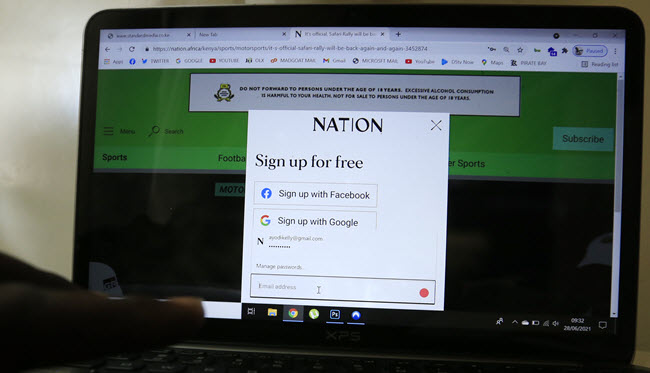In a digital age that thrives on immediacy and unlimited access, the concept of paywalls in Kenya’s media landscape appears to be a paradoxical venture.
A bold attempt to monetize content consumption, it has largely stumbled, and its failures offer a revealing glimpse into the challenges media houses face in the evolving media ecosystem.
The initial push for paywalls was ambitious. The National Media Group, spearheaded by the flagship newspaper, The Nation, stepped into uncharted territory, driven by the conviction that quality journalism deserves adequate compensation.

However, their pioneering efforts, while well-intentioned, showcased the complexities of transforming decades-old content consumption patterns.
The first hurdle lay in the nature of digital content. In an era abundant with free information, convincing readers to pay for news posed a formidable challenge.
The value proposition seemed elusive amidst a sea of free alternatives, and as a result, the initial paywall initiative faltered.
Yet, media houses in Kenya refused to concede. Radio Africa’s reintroduction of a paywall hinted at a shifting strategy — attempting to bundle premium content with added incentives, such as exclusive interviews or analysis. However, this too stumbled, falling short of capturing a sizeable paying audience.
The rebirth of paywalls as content subscriptions carried a glimmer of hope. Radio Africa’s strategic pivot was emblematic of a media landscape searching for equilibrium between quality journalism and financial sustainability.

Yet, the very nature of the approach exposed the fragility of the paywall model. Readers were hesitant to part with personal data, questioning the cost of their privacy for a mere article.
Standard Group’s pursuit of e-newspapers highlighted another possible path. By offering a digital version of the traditional print newspaper at a fraction of the cost, they showcased a model that respected reader habits while embracing the digital transformation.
In doing so, they implicitly acknowledged that it wasn’t the content that needed transformation; it was the medium through which it was delivered.
The paradox is clear — while journalism’s value remains undeniably high, the paywall model clashes with the newfound expectations of the digital audience.
People now crave interactivity, personalization, and seamless access across devices. The rigid walls of paywalls may inadvertently become barriers to building lasting reader relationships.
In a market where content freely flows from social media timelines to news aggregator apps, the task of convincing consumers to pay for what they have been accustomed to receiving for free is akin to urging a river to change its course.

The shift, if it occurs, will be gradual and not without resistance.
While paywalls, as originally conceived, may struggle to take root in Kenya’s media landscape, the industry’s ongoing experimentation reflects a necessary evolution.
The successful models may lie in the intersection of convenience, personalization, and value. Whether through digital newspaper subscriptions, exclusive content bundles, or innovative partnerships, media houses must navigate the digital era while respecting their legacy and the preferences of their audiences.

The quest for a sustainable media ecosystem demands a delicate balance between financial viability and journalistic integrity. As Kenya’s media houses continue to experiment, adapt, and redefine their strategies, they embody the enduring spirit of an industry that remains committed to informing, engaging, and enriching the lives of its readers in a rapidly changing world.







More Stories
Optiven Launches Exciting Easter Bonanza for Real Estate Investors
Kenya Eyes Stronger China Ties at Global Digital Trade Expo Forum
Viktorija Radman appointed Mobile Ecosystem Forum Board member